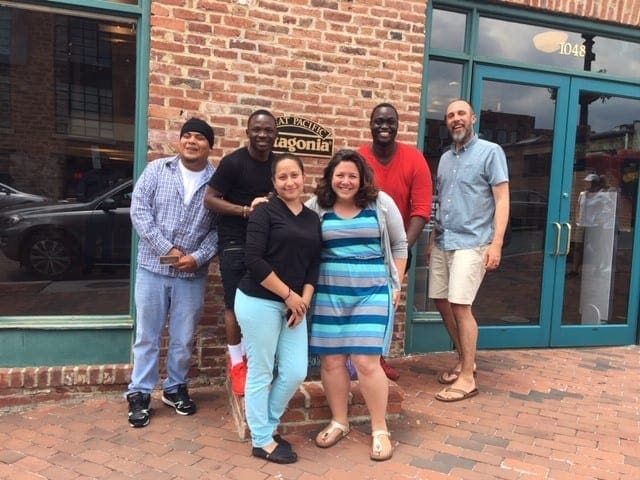Through the Innovation Lab, Patagonia designed a 10-week summer program through a partnership with a community-based organization. The goal was to recruit and support a cohort of four seasonal sales associates in their DC store, with the intention of ultimately offering employment for the holiday season. They found a strong partner in the Latin American Youth Center (LAYC) largely thanks to strongly aligned and mutually beneficial values and goals. The partnership between LAYC and Patagonia proved to be the “secret ingredient” for their successful summer program.
Rebecca Goodstein, Patagonia’s District Environmental Coordinator, shares 5 things she and her colleagues learned about cultivating a strong partnership with a community-based organization:
- Find an organization with whom there is a mutual “energetic fit.” At the first meeting with LAYC, the feelings of mutual appreciation, understanding, and enthusiasm about our programs were palpable. As we learned about how LAYC approached empowering diverse populations of youth, we realized how lucky we were to find a partner whose mission was based on achieving the goals that we were just beginning to articulate. I joked with Jacob Newman, Managing Director at Latin American Youth Center, that we had founded a “mutual admiration society,” as we were so inspired by each other’s work.
- Complement each other’s strengths. Both a wonderful, yet humbling realization, was that the Latin American Youth Center had already established many of the trainings and systems we were planning on developing for our new hiring initiative. Not only did this save us time and resources, but we could tap into the extensive knowledge and experience of our partners who had been steeped in this work for years.
- Like any good relationship, keep communicating and let the partnership evolve. What started as an effort to attract, hire, and train new talent also ultimately revealed that some of our existing practices could be updated, including our interview style and how we trained new hires. LAYC was there every step of the way to give feedback as we examined our systems, and implemented our new practices in our hiring initiative. We worked to be nimble and supportive to our new colleagues, and kept LAYC in the loop with each decision we made, or sought support or guidance from them.
- Learn from each other. We set out to partner with an organization who worked with diverse populations in the hope of expanding our DC team to include co-workers with different experiences, backgrounds, and skillsets. LAYC partnered with us to provide expanded training experiences and job opportunities for their talented members. We ended up learning much more from each other than what we outlined in our initial partnership agreement—we were thrilled to share information about Patagonia’s environmental and corporate responsibility initiatives, and were equally thrilled to learn about LAYC’s robust suite of programs taking place in Patagonia DC’s neighborhood. We were grateful to Innovation Lab for acting as a matchmaker, introducing us to this amazing organization who has been there all along, doing important work right in our community.
- Interact as human beings. The first time we all met in person, we went out for dinner and got to know each other as people and professionals, building a foundation for our work together. We could sense the excitement for what we were embarking on. Like most great partnerships, if it starts with guacamole and good conversation, things are probably going to go well.
To learn more about Patagonia’s project click here.

